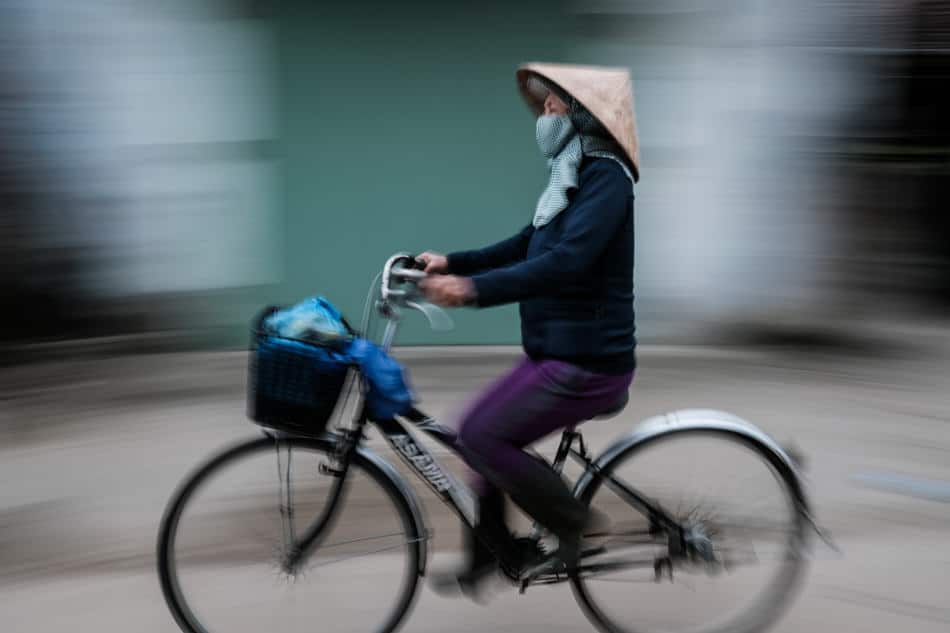Tutorials / COMPOSITION, ALL TUTORIALS

Doing Travel Photography in bad lighting conditions
As it has been raining for over a month I have been running Hoi An Photo Tour under poor lighting conditions. Coming back from 3 months of traveling in some parts of Asia, experiencing 4 actual days of rain over that time, I do miss the sun and being able to play with quality light. But let’s be honest: a photographer should be able to work in any lighting conditions, good or bad. So let’s hear about how we can deal with poor lighting situations and bad weather for Travel Photography, with some images I have taken around Hoi An during the past month.
As the thick cloud cover remains upon us, we can easily end up in backlit situations. As the sky and clouds are often brighter than the subjects on the ground (the bright clouds will reflect most of the sunlight), shooting wide and towards the sky will end up in images where our subjects are underexposed, backlit. The best way to deal with it would be to simply get rid of the sky.
Shoot down, look for details and patterns, interesting textures on the ground. Without any sky in your frame, your images will end up with better exposure and no distracting pieces of white sky.
It is also said that a cloudy day is a good portrait day. As the light is even and soft it lits your subject’s face in a soft and even way. Just make sure you do not include pieces of overexposed sky in your background.
Under grey skies we often talk about the flat light it creates. A flat light is basically a light which lacks contrasts. The light is even when shooting outdoor, making the photos lacking depth, being “flat”. Your job as a photographer is to find locations where you will be able to recreate a more interesting contrast, by for example finding situations where the background is darker. Place your subject in the light and the contrasts will become interesting again. While shooting in Hoi An market I saw the ladies selling fish standing in front of the darkest part of the market.
As I just described, things tend to look quite flat when shooting under bad light conditions. I realized that when doing panning, my subject’s colors tend to pop out. As most of the image is blurry the eyes tend to travel faster through the image as there are no sharp elements to keep our attention on. In this case, our brain will be more attracted to vivid colors, and this will be enhanced when these colors are sharper than the rest of the image, which is what happens when doing panning.
Also, even though the poor light doesn’t create dramatic silhouettes, it is still possible to capture them. My tip is to try to find the most interesting cloud patterns and textures and place an interesting subject between myself and the sky. In that case with some village kids playing football at dusk.
To recreate good lighting conditions and interesting contrasts, a photographer should find scenes that offer a good mix of light and shadow. As the light is even outdoor, it is possible to find stronger contrasts indoor: someone sitting next to a window, or in front of their doorway. Exposing for the highlights will help us create more dramatic images.
Something that is more difficult to do during summer times, find yourself a good puddle on the road and wait for some interesting subjects to go by. It also helps if you face a simple background in order to simplify the composition.
Would could also try to mix two of these tips as we did over the last month during Hoi An Photo tour: our monthly challenge was “reflected panning”.
We can’t just rely on quality light to create dramatic images. This may seem a more difficult task but this is actually what will make you a better photographer. Instead of simply relying on great light, try and compose more compelling images: playing with lines and shapes and waiting for a better “moment” to capture our subjects’ actions. It is harder work but works under all types of lighting. I can’t stress the importance for anyone learning photography to try and push themselves out of their comfort zone in order to learn new things. Shooting in bad light conditions is a great exercise!









Thank you for your advise and comments Etienne. It is so helpful to have those reminders as, it is easy to forget the basic rules in a he heat of the moment. Also, thanks for the latest reviews and information on the shoots. Itis always with great interest I open your reviews.
Merci JP!